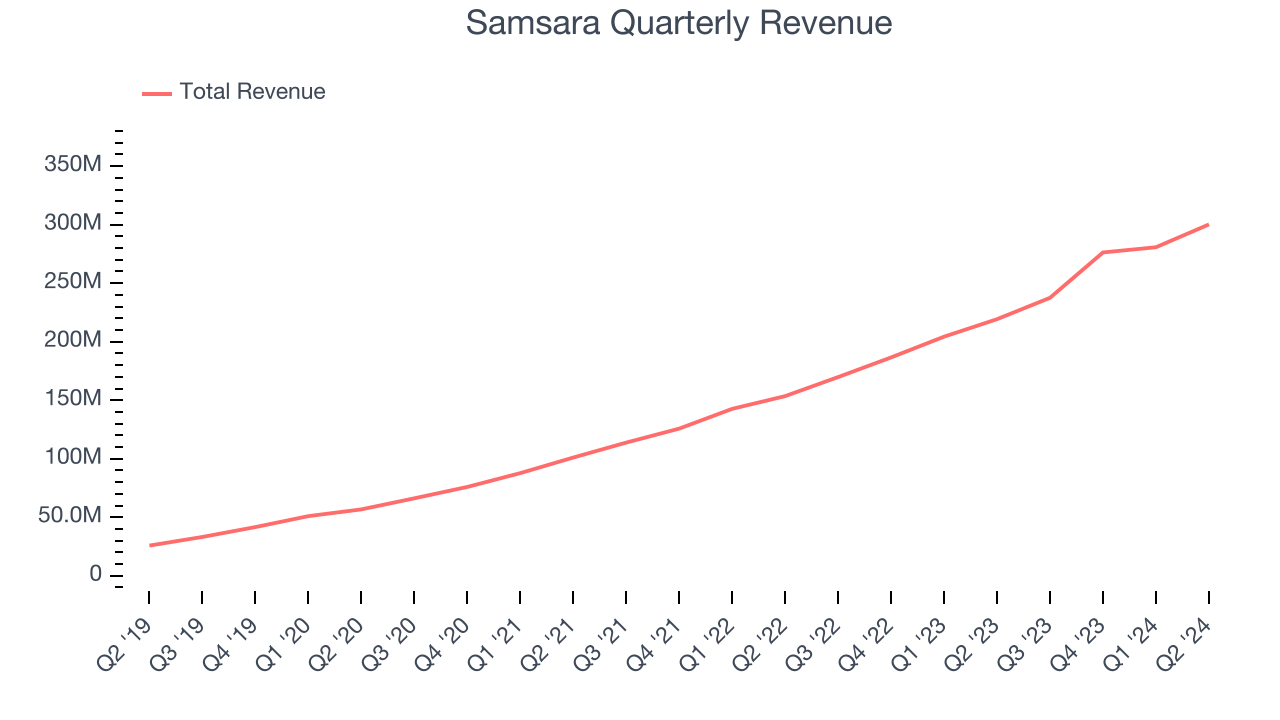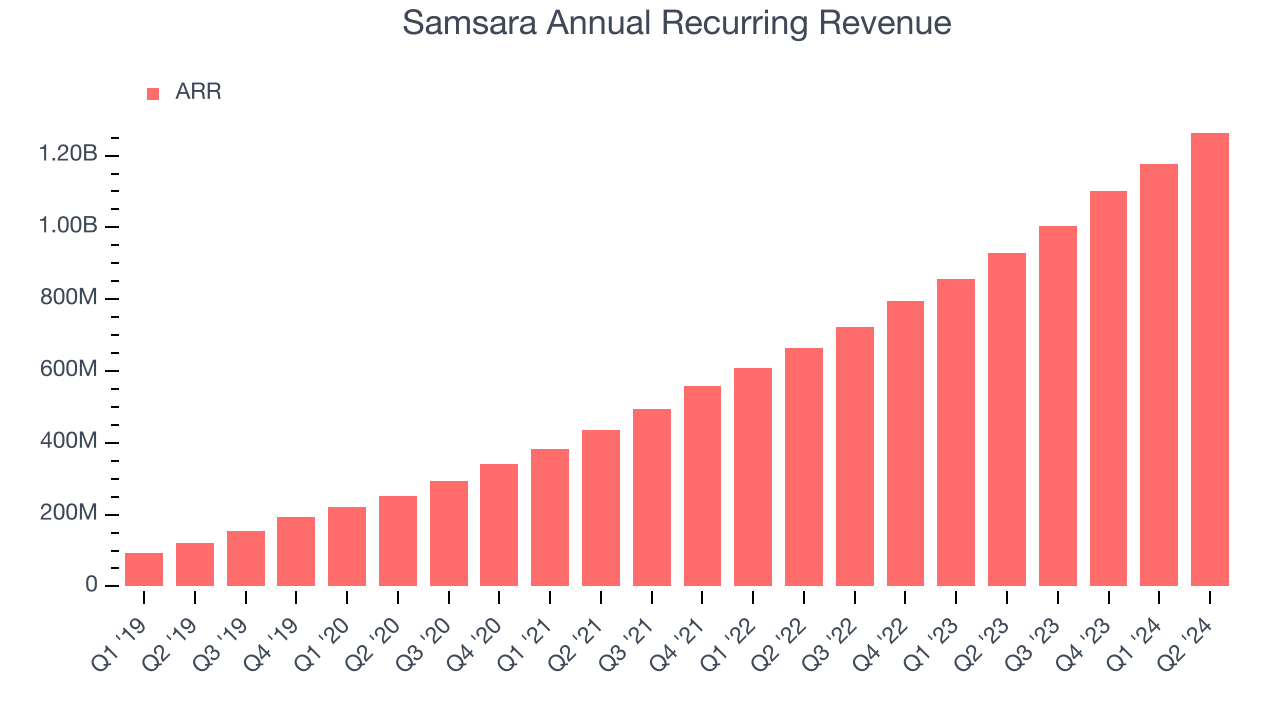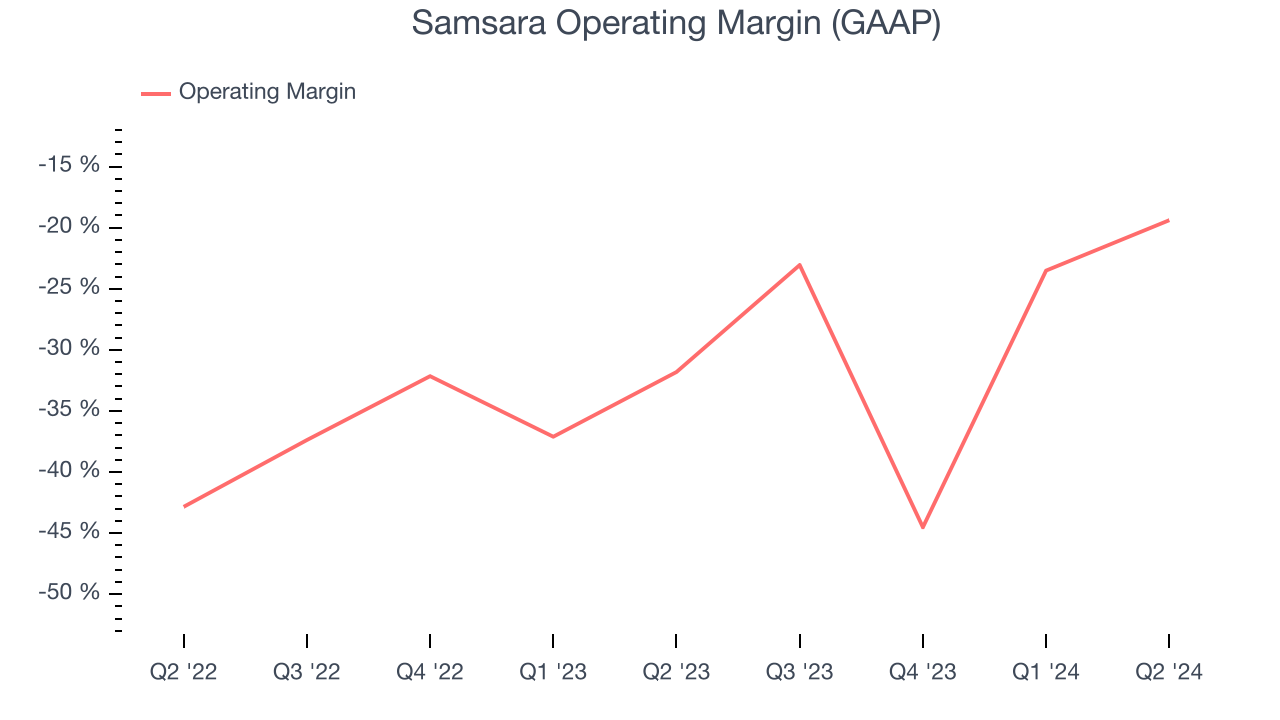
What a time it’s been for Samsara. In the past six months alone, the company’s stock price has increased by a massive 48.6%, reaching $56.19 per share. This was partly due to its solid quarterly results, and the run-up might have investors contemplating their next move.
Is now still a good time to buy IOT? Or are investors being too optimistic? Find out in our full research report, it’s free.
Why Does IOT Stock Spark Debate?
One of the few public companies where Marc Andreessen is a Board member, Samsara (NYSE:IOT) provides software and hardware to track industrial equipment, assets, and fleets.
Two Things to Like:
1. Skyrocketing Revenue Shows Strong Momentum
A company’s long-term sales performance signals its overall quality. Even a bad business can shine for one or two quarters, but a top-tier one grows for years. Over the last three years, Samsara grew its sales at an incredible 49% compounded annual growth rate. Its growth surpassed the average software company and shows its offerings resonate with customers. 
2. ARR Surges as Recurring Revenue Flows In
While reported revenue for a software company can include low-margin items like implementation fees, annual recurring revenue (ARR) is a sum of the next 12 months of contracted revenue purely from software subscriptions, or the high-margin, predictable revenue streams that make SaaS businesses so valuable.
Samsara’s ARR punched in at $1.26 billion in Q2, and over the last four quarters, its growth averaged 37.6% year-on-year increases. This performance was fantastic and shows that customers are willing to take multi-year bets on the company’s technology. Its growth also makes Samsara a more predictable business, a tailwind for its valuation as investors typically prefer businesses with recurring revenue. 
One Reason to be Careful:
Operating Losses Sound the Alarms
While many software businesses point investors to their adjusted profits, which exclude stock-based compensation (SBC), we prefer GAAP operating margin because SBC is a legitimate expense used to attract and retain talent. This is one of the best measures of profitability because it shows how much money a company takes home after developing, marketing, and selling its products.
Samsara’s expensive cost structure has contributed to an average operating margin of negative 27.6% over the last year. This happened because the company spent loads of money to capture market share. As seen in its fast revenue growth, the aggressive strategy has paid off so far, and Wall Street’s estimates suggest the party will continue. We tend to agree and believe the business has a good chance of reaching profitability upon scale.

Final Judgment
Samsara’s merits more than compensate for its flaws, and with the recent rally, the stock trades at 22.9x forward price-to-sales (or $56.19 per share). Is now the time to initiate a position? See for yourself in our comprehensive research report, it’s free.
Stocks We Like Even More Than Samsara
The elections are now behind us. With rates dropping and inflation cooling, many analysts expect a breakout market to cap off the year - and we’re zeroing in on the stocks that could benefit immensely.
Take advantage of the rebound by checking out our Top 6 Stocks for this week. This is a curated list of our High Quality stocks that have generated a market-beating return of 175% over the last five years.
Stocks that made our list in 2019 include now familiar names such as Nvidia (+2,691% between September 2019 and September 2024) as well as under-the-radar businesses like United Rentals (+550% five-year return). Find your next big winner with StockStory today for free.
